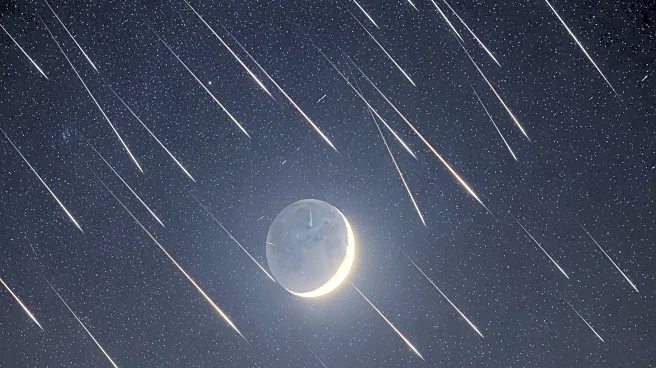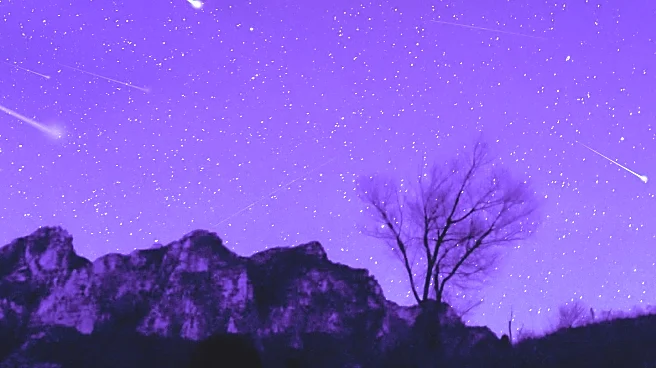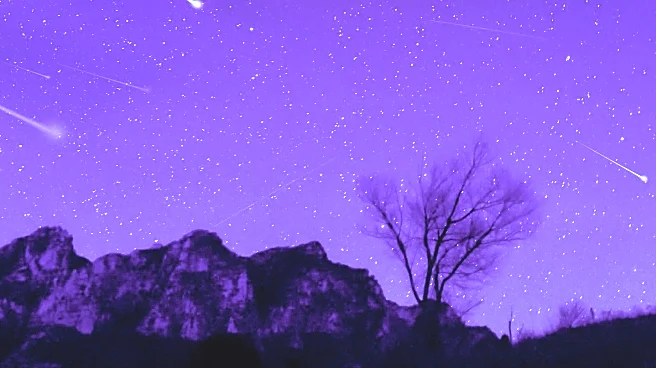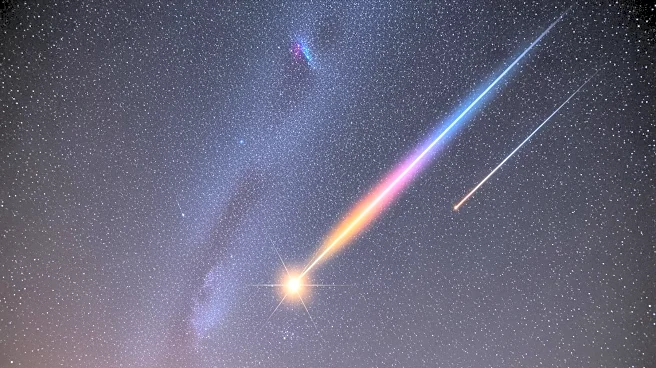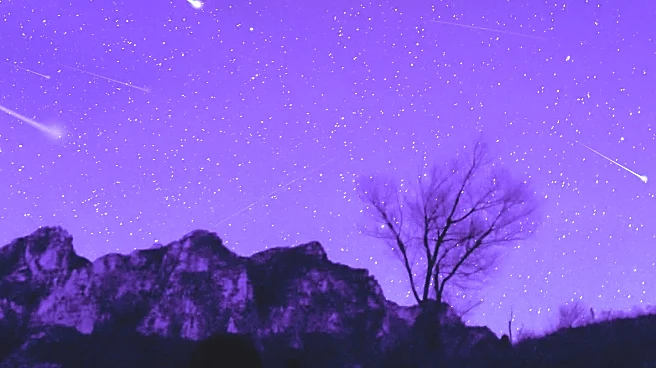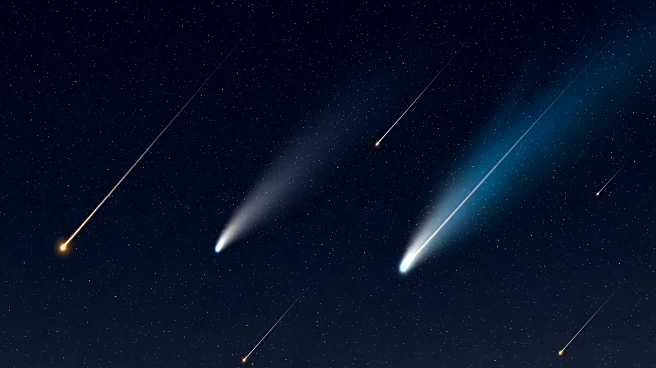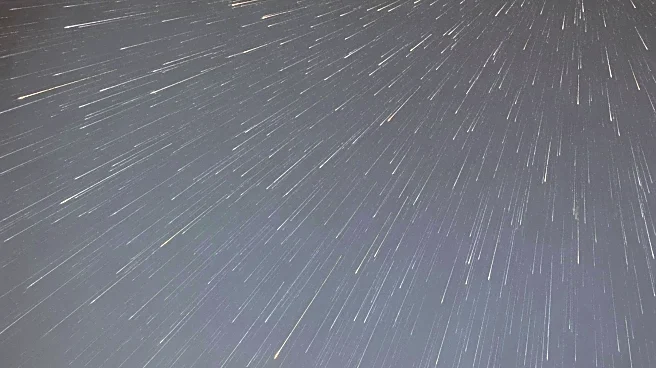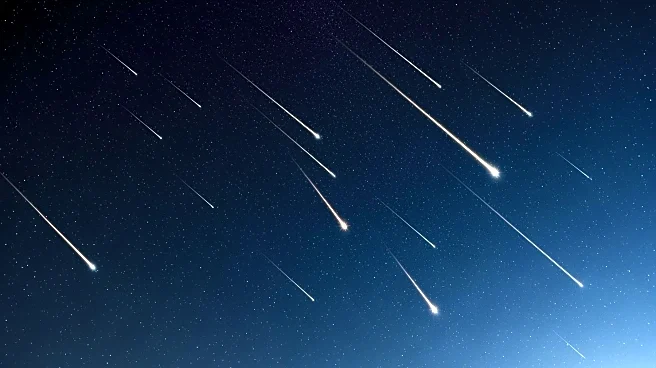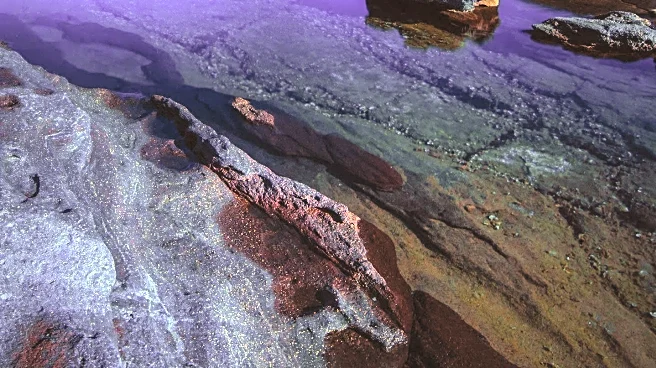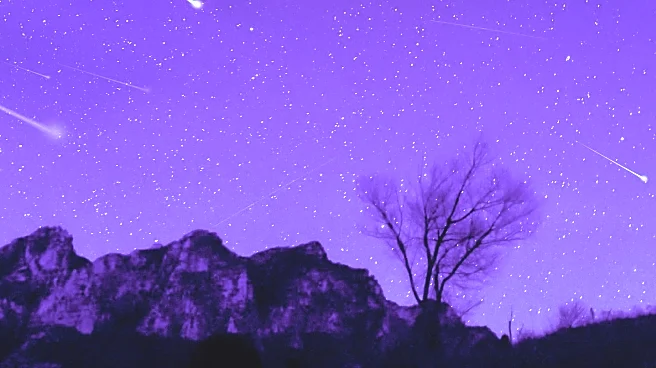What's Happening?
The Orionid meteor shower is set to peak this week, offering sky-gazers a brilliant celestial display. The shower, which originates from debris left by Halley's Comet, will be most visible on Monday night
and early Tuesday morning. The peak coincides with a new moon, ensuring dark skies that enhance visibility. Observers can expect to see 10 to 20 meteors per hour under clear conditions. The Orionids are known for their speed and brightness, with some meteors producing persistent smoke trails. The shower will continue through November 22, although the number of visible meteors will decrease over time.
Why It's Important?
Meteor showers like the Orionids provide a unique opportunity for public engagement with astronomy and science. The event encourages people to explore the night sky, fostering interest in celestial phenomena and space exploration. Additionally, the Orionids serve as a reminder of the ongoing influence of Halley's Comet, a significant astronomical object with historical importance. The shower's visibility across the U.S. makes it accessible to a wide audience, promoting educational activities and community events centered around astronomy.
What's Next?
Following the Orionid peak, other meteor showers such as the Southern Taurids and Geminids will occur later in the year, offering more opportunities for sky-watching. The American Meteor Society and other organizations will continue to provide updates and viewing tips for these events. As interest in astronomy grows, educational institutions and observatories may host events to engage the public and provide deeper insights into meteor showers and their origins.
Beyond the Headlines
Meteor showers like the Orionids highlight the interconnectedness of celestial bodies and their impact on Earth. The debris from Halley's Comet, which causes the Orionids, underscores the dynamic nature of the solar system. These events also raise awareness about the importance of preserving dark skies, as light pollution can significantly hinder the visibility of such phenomena. Efforts to reduce light pollution can enhance the experience of observing meteor showers and other astronomical events.
